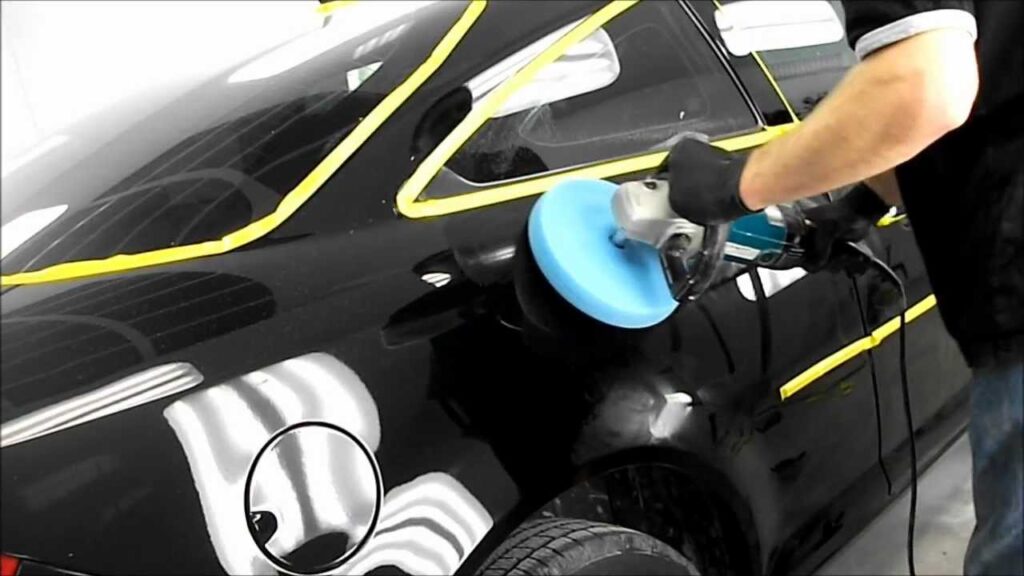Introduction
Have you ever seen a car so shiny that it looked like a mirror? That jaw-dropping, gleaming finish isn’t just about a clean car—it’s the magic of rubbing polishing. Whether you’re a car enthusiast or simply want your vehicle to turn heads, rubbing polishing is a game-changer. But why is it so important? Let’s find out.
What is Rubbing Polishing?
Definition and Process
Rubbing polishing is a method of using abrasive compounds to smooth and restore the car’s paint surface. It eliminates imperfections like scratches, oxidation and swirl marks, leaving behind a flawless, reflective finish.
Types of Rubbing Polishing
- Manual Polishing: Done by hand using microfiber cloths and applicators.
- Machine Polishing: Uses rotary or dual-action polishers for precision and efficiency.
Benefits of Rubbing Polishing
Enhancing Paint Clarity
Polishing removes the dull top layer of paint, revealing the vibrant and glossy paint beneath.
Restoring Faded Paint
Over time, UV rays and pollutants can fade your car’s color. Polishing restores its original brightness.
Removing Surface Imperfections
Scratches, swirl marks and water spots are no match for rubbing polishing which smooths out these flaws.
Preparing for Protective Coatings
Polishing creates a clean, even surface, ensuring that wax, ceramic coatings or sealants adhere better.
How Rubbing Polishing Works
Abrasive Compounds and Their Role
These compounds act like super-fine sandpaper, carefully removing microscopic layers of damaged paint.
Step-by-Step Process of Rubbing Polishing
- Wash and dry the car to remove dirt and debris.
- Removing contaminants from the car.
- Inspect the paint for imperfections.
- Apply the polish in small sections.
- Buff the surface using circular motions or a machine polisher.
- Wipe away residue with a clean microfiber cloth.
Tools and Products Used
- Polishers machines (rotary or dual-action)
- Abrasive compounds
- Microfiber cloths
When Should You Opt for Rubbing Polishing?
Signs Your Car Needs Polishing
- Faded paint
- Visible scratches or swirl marks
- Lack of shine
Frequency of Polishing for Optimal Results
While it depends on your car’s usage, polishing once or twice a year is generally sufficient.
Common Mistakes in Rubbing Polishing
Over-Polishing
Excessive polishing can thin your car’s clear coat, leading to long-term damage.
Using Incorrect Products
Using harsh or incompatible compounds can do more harm than good.
Skipping Preparation Steps
Neglecting to wash and prep the car can result in scratches during polishing.
DIY vs. Professional Rubbing Polishing
Pros and Cons of DIY
- Pros: Cost-effective and satisfying for car enthusiasts.
- Cons: Risk of mistakes and limited tools.
Why Professional Services Are Worth It
Professionals like GlossZilla Car Detailing Studio use high-quality products, advanced tools and expert techniques to deliver superior results.
Rubbing Polishing and Car Maintenance
Keeping the Finish Lasting Longer
- Use a pH-neutral shampoo for regular washes.
- Avoid parking under direct sunlight for prolonged periods.
Complementary Maintenance Practices
Pair polishing with waxing or ceramic coating to extend its effect and protect your car’s paint.
Conclusion
Rubbing polishing is more than just a beauty treatment for your car—it’s an essential step in maintaining its health and value. By removing imperfections and enhancing the paint’s clarity, you can achieve that mirror-like finish you’ve always dreamed of. So, why wait? Treat your car to a little polishing love today!
FAQs
1. Can rubbing polishing damage car paint?
When done correctly, it won’t. Over-polishing or using harsh products can cause damage, so caution is key.
2. How is rubbing polishing different from waxing?
Polishing removes imperfections, while waxing adds a protective layer and enhances shine.
3. Is rubbing polishing necessary for new cars?
Yes, it can remove minor imperfections from the factory or dealership.
4. How long does the effect of rubbing polishing last?
Typically, the results last 6-12 months, depending on maintenance.
5. What should I avoid after polishing my car?
Avoid washing with harsh chemicals or using abrasive sponges that could damage the finish.


